All Better
Everyone is saying the firmware has fixed the issues. I’ve only had one person comment that the banding issue has also been fixed. The sRaws have to be processed in DPP, so that was the reason for the update to that.
I still have one source saying added features could still be on the table in the next 30-60 days. Don’t hold us to that.
Jessops in Belfast
I finally got the film I wanted for my needs at Jessops in Belfast. Very nice people there. If anyone from the store reads this site, make a comment and I’ll drop a CR T-Shirt off at the store tomorrow. I leave Belfast on Sunday.
cr
|
When you purchase through links on our site, we may earn an affiliate commission. Here's how it works. |


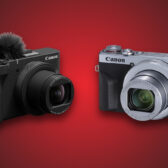
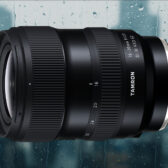
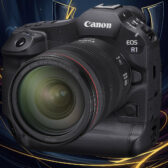
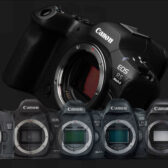

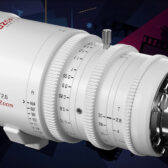

“I’ve only had one person comment that the banding issue has also been fixed. The sRaws have to be processed in DPP, so that was the reason for the update to that.”
I used sRAW1 for the first time the other day, didnt see any banding. Didnt use it before the firmware update at all though. Not sure what you mean they have to be processed in DPP? They loaded OK in lightroom?? I thought the reason for the change to DPP was a modification to the Picture Styles, which resulted in magenta tint to shadows if the DPP was not updated?
Has anybody checked if the burst rate or any of the processing speed is affected as a result of the corrected black dot issue? I am wondering if Canon changed some parameters or if they are actively correcting it in software before writing the raw and jpeg, etc.
Glad to hear you got the film. Jessops in Belfast is a lot bigger than the ones in Londonderry and Ballymena (my two locals – I’m stuck in the middle in Coleraine, about fifty miles north-west of where you were).
I take it your trip went well?
David
I still haven’t updated mine, it works fine with the old firmware. I may take some before and after photos if I get the time.
I am still expecting that Canon will add a 25 fps option, but not until Spring. It will take a lot of testing if they decide to do it. Aperture control is needed to meet their boast of shallow depth of field capability. We will still need to add ND filters to use large apertures, I think its likely that the sensor can’t function well with too much light, so dropping the ISO is likely impractical.
I’ve been shooting video with a manual lens and was surprised to notice that it will slow the shutter speed to 1/8000, in movie mode, if given no other choice (eg: with my lens at f/2.8 and pointed near the sun). It seems the defaults with an automatic lens weigh heavily towards motion blur and deep depth of fields. There is no technical limit forcing this, such as electronic shutter speed. So, manual controls would definitely be useful.
Slightly untwisting the lens is always a manual wide-open solution, albeit dangerous. ;) One can even change lenses mid-video this way, for the adventurous. NDs certainly help with more natural-looking motion blur, of course. Maybe back-to-back polarizers would work as an “adjustable iris” in a pinch…
At least the diffraction limits at the small apertures it does tend to pick (eg: f/16, f/22) really aren’t ever going to reduce sharpness due to the reduced resolution at 1080p.
Simon: did you mean that aiming the 5D MK II with manual lens (for instance a Nikon mounted with an adapter)to the sun, the camera did set the shutter to 1/8000 (8,000) in video mode ??
I didn’t see anyone reporting such a high shutter speed on video mode!
– Did anyone get any notice about any firmware Hack to allow full (or almost full) manual settings in video mode?
– Would Canon do it available? since it is clear to me that the camera CAN provide Manual Settings in Video mode…
Pablov: That’s right. If you press * during video recording, it will show (and allow updating) of the current shutter speed, aperture, and ISO. I successfully shot video of very bright sun reflection from water that was definitely faster shutter than the usual 1/300!
Try it — just untwist your auto lens slightly (don’t forget about it!), and record a video with the lens wide open.
I can sort of see why Camon did what they did — motion blur makes a more natural video, focus doesn’t matter anywhere near as much (which is helpful unless you are very good), and at 1/3rd the resolution the diffraction limit is probably past f/32.
I’d love to see a 1:1 (cropped 1080p) video mode, too — may as well use the resolution that is there. It’s definitely possible since live view 10x focus mode does it.
Simon:
Thanks a lot for your answer. I’m new to this site. I still don’t own a 5D MK II, but seriously considering buying it.
I currently own Nikon gear, but due to some service missings and extremelly high costs in the country I live in, I might switch to Canon.
PLEASE let me know why do you need to slightly untwist your “auto” lens?
I’m planning to buy Canon L lenses, but I also own some Nikon AF (non G type, thus they have aperture ring, and I plan to buy an adapter to use them on Canon, specially for video mode) But OBVIOUSLY I would really like to use the Canon L lenses for Video… (so any detail about it is more than welcome :) )
Hi, Pablov!
Canon lenses (unlike Nikon G lenses) sit with their aperture fully open when not connected to a body. So, by not fully turning the lens on the mount, the electrical connection is broken and the camera cannot control the aperture, leaving it fully open.
Since most people are asking for manual control in order to open up their lens and get a narrow depth of field, this is one cheap hack way to accomplish it. It’s also dangerous, since your lens can fall off (!), but that certainly makes it more exciting.
As for L lenses — the big aperture lenses are great for shooting at night. Other than that, you could get by with really cheap lenses for _most_ things, since you’re not shooting anywhere near the full sensor resolution for 1080p. You’d have to worry about other things such as flare and barrel distortion, however.
I purchased the “pro” Nikon->EOS adapter from haodascreen.com, and the tiny adapter did seem to work well except for the G lenses needing some sort of modification to push on the aperture lever. Your non-G ones would be fine, but no AF. I am still surprised nobody has made a microcontroller circuit to do this yet.
Cheers :)